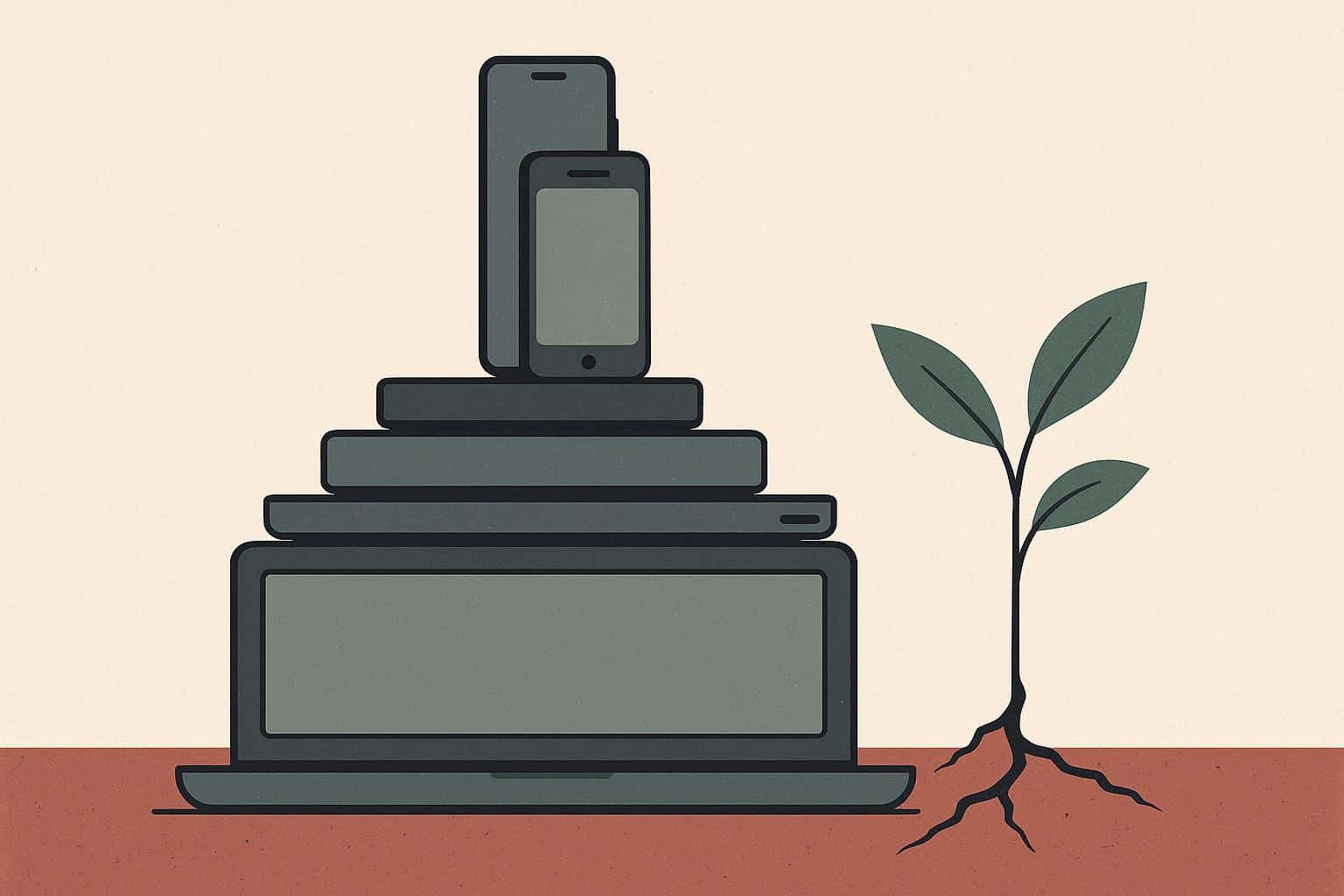For decades, Silicon Valley has run on a single assumption: more is better. More apps, more updates, more features. But a quiet counterculture is starting to emerge among developers, entrepreneurs, and even consumers—a movement known as tech degrowth. Instead of obsessing over infinite scale and relentless innovation, these innovators are asking a radical question: What if the future of technology is about building less?
In an age where every device wants your attention and every app craves your data, tech degrowth doesn’t mean rejecting technology. It means rethinking its purpose. The idea is simple but subversive—create tools that are slower, smaller, and more intentional, rather than endlessly optimized for engagement and profit.

This philosophy is gaining traction across industries, from sustainable hardware startups to minimalist software companies. Even investors are starting to take notice, seeing potential in “quality over quantity” innovation.
From Growth-at-All-Costs to Purposeful Progress
For years, the tech world celebrated “move fast and break things”—a motto that powered Facebook, Uber, and countless startups. But that speed came with consequences: environmental waste, digital burnout, and user exploitation. Tech degrowth offers a more thoughtful alternative.
Instead of designing the next addictive app, some companies are focusing on repairability, longevity, and ethical data practices. The shift mirrors trends in sustainable consumption—like the resurgence of repair cafés and slow fashion movements. People are realising that endless growth isn’t sustainable, either for the planet or their attention spans.
In fact, this mindset is influencing digital behaviour beyond hardware. Many users are now opting for simpler, privacy-first tools or prepaid payment methods that don’t rely on big data ecosystems. That’s why many are turning to prepaid alternatives. They head over to digital marketplaces like Eneba – buy Vanilla gift card and shop securely without sharing sensitive banking details, which perfectly aligns with the growing trend of mindful, minimalist spending.
The Rise of “Do Less, Better” Startups
Tech degrowth isn’t just a buzzword—it’s showing up in the real world. Across Europe and the US, smaller startups are deliberately limiting their scale and focusing on depth instead of reach.
Examples of Degrowth in Action:
- Fairphone, a Dutch smartphone company, builds modular devices that can be easily repaired instead of replaced.
- Hey.com, the email service by Basecamp, rejects the bloat of Gmail with clean design and minimal features.
- Light Phone, a minimalist mobile phone, is designed to do as little as possible—just calls, texts, and essential functions.
Each of these companies challenges the assumption that innovation must equal complexity. Their approach appeals to a growing class of users tired of constant upgrades and subscription traps.
Why Tech Degrowth Makes Economic Sense
It may sound paradoxical, but building less can actually lead to greater long-term profitability. Consumers are increasingly sceptical of planned obsolescence—the idea that products are designed to fail so you’ll buy new ones. Brands that prioritise durability, transparency, and user trust are finding that loyalty often outweighs scale.
Moreover, with sustainability becoming a core business metric, investors are beginning to reward companies that align with environmental and ethical principles. In 2023, over 60% of European startups reported integrating sustainability goals into their core mission—an indicator that purpose-driven growth is becoming mainstream.
The Human Side of Degrowth
Beyond the economics, tech degrowth is also about mental health and digital well-being. Constant connectivity has taken its toll—studies link excessive screen time to anxiety, insomnia, and attention fatigue.
By simplifying the technology we use, degrowth-minded companies aim to reduce digital overwhelm. This could mean:
- Limiting notifications and digital noise.
- Designing interfaces that encourage mindful use.
- Reducing data tracking and algorithmic manipulation.
Essentially, tech degrowth restores balance by giving people back control—something that “growth-at-all-costs” platforms have often taken away.
Challenges: Can Tech Slow Down Without Stalling?
Of course, not everyone is convinced. Critics argue that tech degrowth could stifle innovation or make products less competitive in a hyperconnected world. Slowing down, they say, risks leaving room for larger corporations to dominate.
But proponents counter that the real threat isn’t going slower—it’s burning out users and resources in pursuit of endless expansion. The challenge is to find equilibrium: innovation that’s responsible, regenerative, and resilient.
This mindset doesn’t mean halting progress—it means asking what kind of progress truly improves lives.
A Future Built on Less, but Better
The idea of tech degrowth might seem idealistic in a market driven by quarterly profits and venture capital, but it’s gaining momentum precisely because of its realism. In a world drowning in data and devices, consumers crave simplicity, security, and meaning.
The next big wave in technology might not come from the fastest-growing startup, but from the one that dares to grow with intention. By embracing “less,” these innovators are setting the stage for a healthier digital future—one where sustainability, privacy, and human well-being take precedence over scale.
And as more people seek conscious consumption and digital independence, digital marketplaces such as Eneba reflect this shift—offering payment options that empower users without trapping them in endless ecosystems.
Because sometimes, the smartest innovation isn’t building more tech—it’s building better tech.












